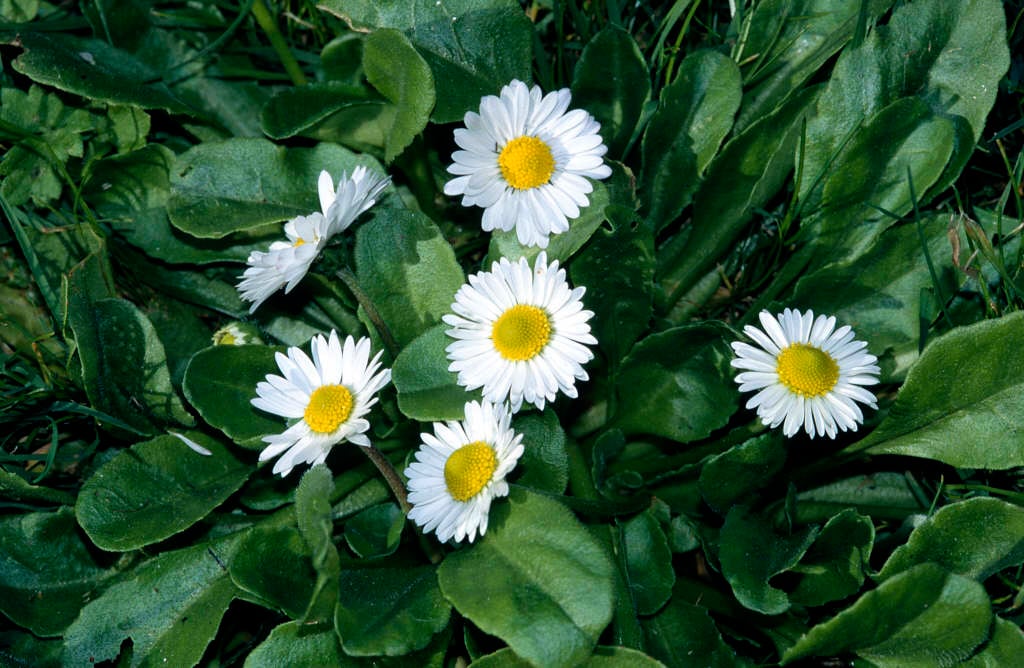Not the plant you're looking for? Search over 300,000 plants
Herbaceous Perennial
Bellis perennis
daisy
An evergreen perennial forming rosettes of dark green, spoon-shaped leaves, with small, solitary, yellow-centred, pink-tinged, white daisies in late spring and summer
Other common names
bairnwortbanwood
see morebanwort
benner gowan
bone flower
bonewort
common gowan
double daisy
ewe gowan
goose flower
gowlan
May gowan
pasquarette
bruisewort
herb Margaret
lockin gowan
luckin gowan
marguerite
noon flower
llygad y dydd

prev
next
Buy this plant
Size
Ultimate height
Up to 10cmTime to ultimate height
2–5 yearsUltimate spread
0–0.1 metreGrowing conditions
Chalk
Clay
Loam
Sand
Moisture
Moist but well–drained, Well–drainedpH
Acid, Alkaline, NeutralColour & scent
| Stem | Flower | Foliage | Fruit | |
| Spring | Pink White Yellow | Green | ||
|---|---|---|---|---|
| Summer | Pink White Yellow | Green | ||
| Autumn | Green | |||
| Winter | Green |
Position
- Full sun
- Partial shade
Aspect
South–facing or North–facing or West–facing or East–facing
Exposure
Exposed or Sheltered Hardiness
H7Botanical details
- Family
- Asteraceae
- Native to GB / Ireland
- Yes
- Foliage
- Evergreen
- Habit
- Matforming
- Genus
Bellis are perennials forming a rosette of spoon-shaped leaves, with daisy-like flower-heads, often double in cultivars, from early spring to late summer
- Name status
Correct
- Plant range
- SW Eurasia
Get involved
The Royal Horticultural Society is the UK’s leading gardening charity. We aim to enrich everyone’s life through plants, and make the UK a greener and more beautiful place.